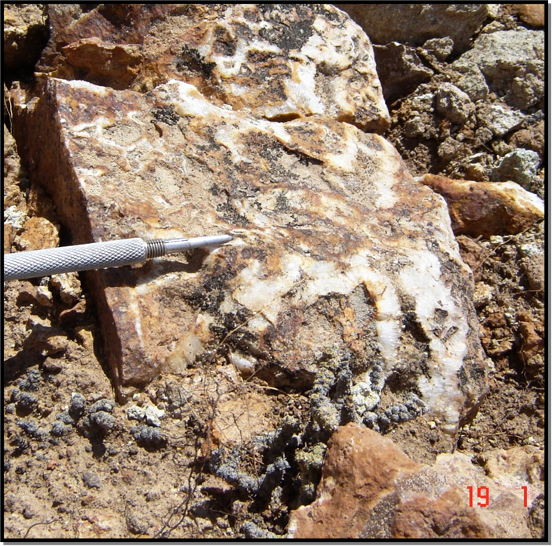
Commodity: Gold in Low Sulphidation Veins and Breccias
Partner: Available for Joint Venture
Location: The Cerro Covadonga Project is located approximately 40 Km North of the Cerro Vanguardia gold mine, operated by Anglo American in the centre of the Deseado Massif, (see figure 1).
Figure 1, Deseado Massif, Magnaterra Minerals Property Map.
Project Operator: Magna Terra Minerals has 100% control, through a leasing agreement with a private individual, of the Cerro Covadonga M.D.
Property Information: The Cerro Covadonga M.D. constitutes 2,945 hectares on which the project is based and this property is largely surrounded by other Magnaterra properties comprising approximately 25,000 hectares. The principal area of interest occurs on the western side of the Cerro Covadonga M.D. (see Figure 2). The zones discovered form a 3km strike length which we interpret to be a major dilatational jog.
Figure 2, Location of the Cerro Covadonga project within the Covadonga property and relative to the regional geology and Cerro Vanguardia gold mine.
Geology: This project is at an early stage of exploration and has been characterized by Au bearing, low sulphidation veins and breccias, hosted in andesitic flows and rhyolitic tuffs of the Bajo Pobre and Chon Aike Formations. Most of the surface gold is concentrated in the discovery vein, Lomo Vetado and Trincheras Zones. Epithermal veins, stringers and breccias form an Au bearing footprint of 600m by 150m.
A significantly larger mineralized footprint from rock chip and soil samples with anomalous Au, Lead (Pb), Arsenic (As) and Mercury (Hg) over a 3 km strike length in veins and hydrothermal breccias has been identified. Trenching, (see Figure 3) has revealed anomalous Au with a very high correlation coefficient to Pb in argillic alteration in volcanic. The alteration, mineralization and geochemistry infer project outcrops are at or near the top of a low sulphidation gold-silver system.
Figure 3, Trench map with hydrothermal corridors and surface gold assays relative to argillic alteration halo.
Work on the project includes a 700+ soil sample campaign based on a 50 m grid which contributed to the mapping of the Gold and geochemical footprint and supported the design of the ground magnetic and Induced Polarization blocks. Figure 4 illustrates a reduced to the pole magnetic map overlain by gold in rock chips and soil.
Figure 4, Reduced the Pole ground magnetics with rock chip and soil Au anomalies.
The orientation of veins varies significantly, but generally ranges from north-northwest to west-northwest. This observation is consistent with the general west-northwest orientation of gold in soils and the same orientation of the magnetic low, which generally coincides with the gold bearing area. The mineralization and alteration footprint measures approximately 1 by 3 kilometres.
The Cerro Covadonga is drill ready, and the Company has designed a preliminary drill plan of 19 holes totalling 2400 metres to test priority targets.